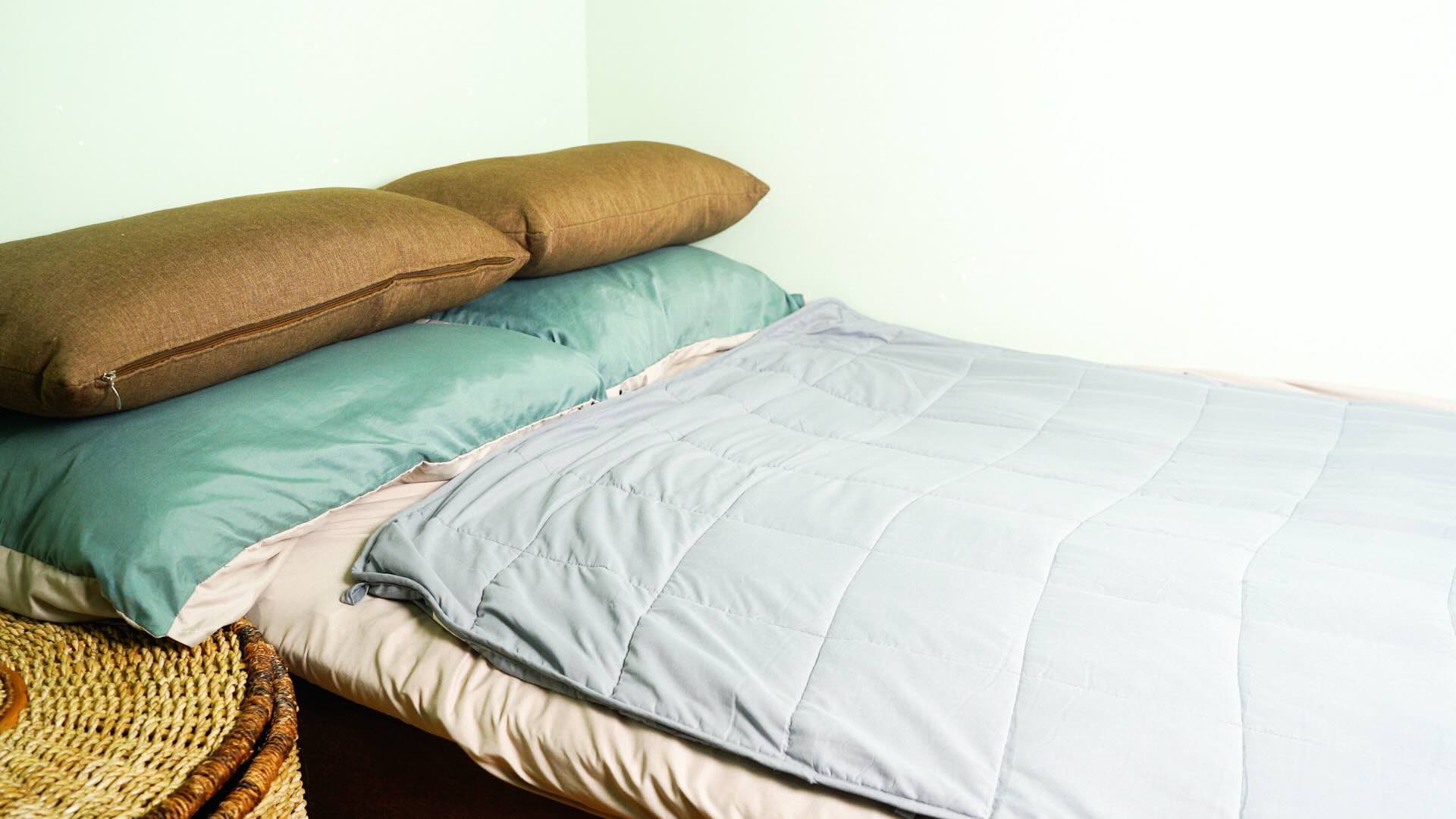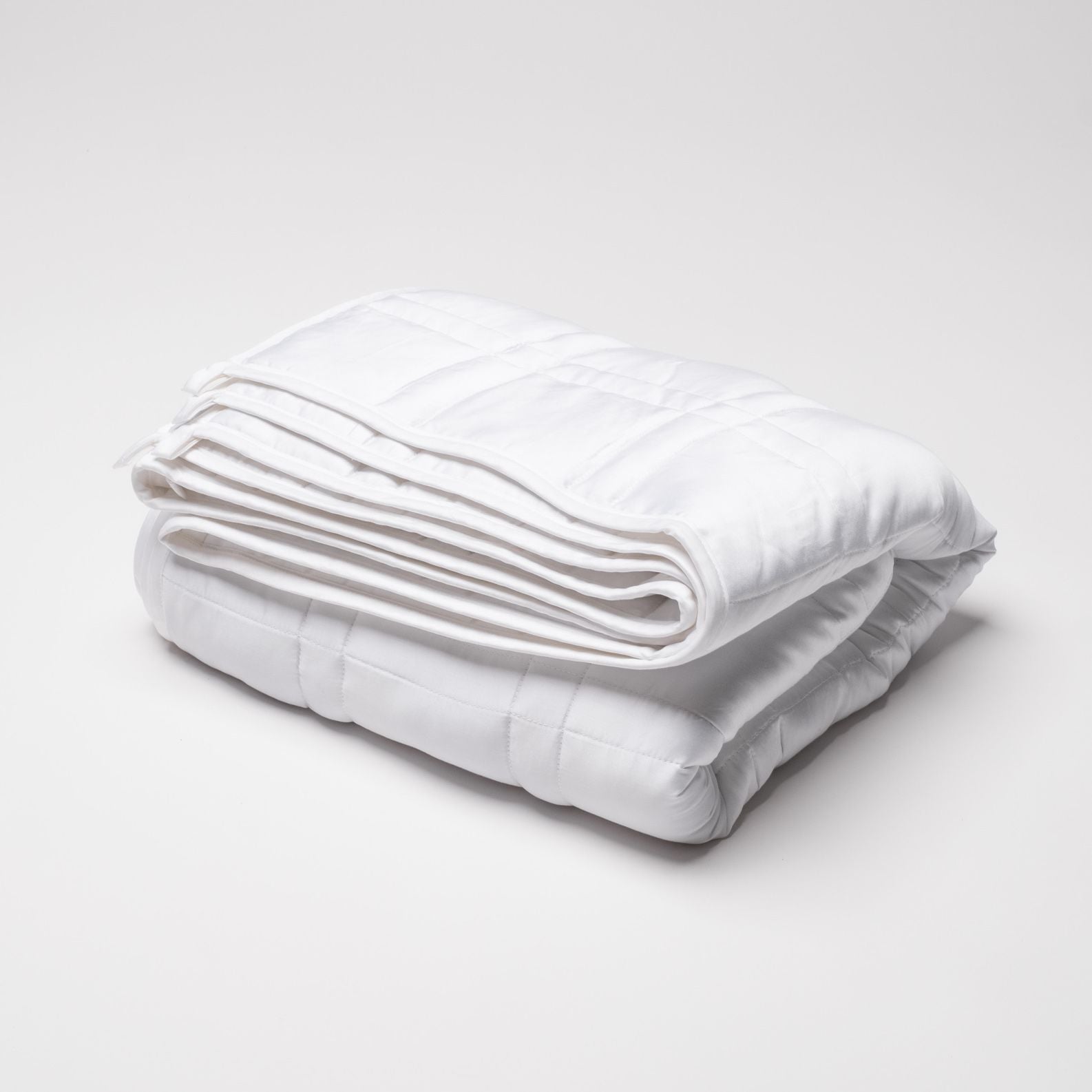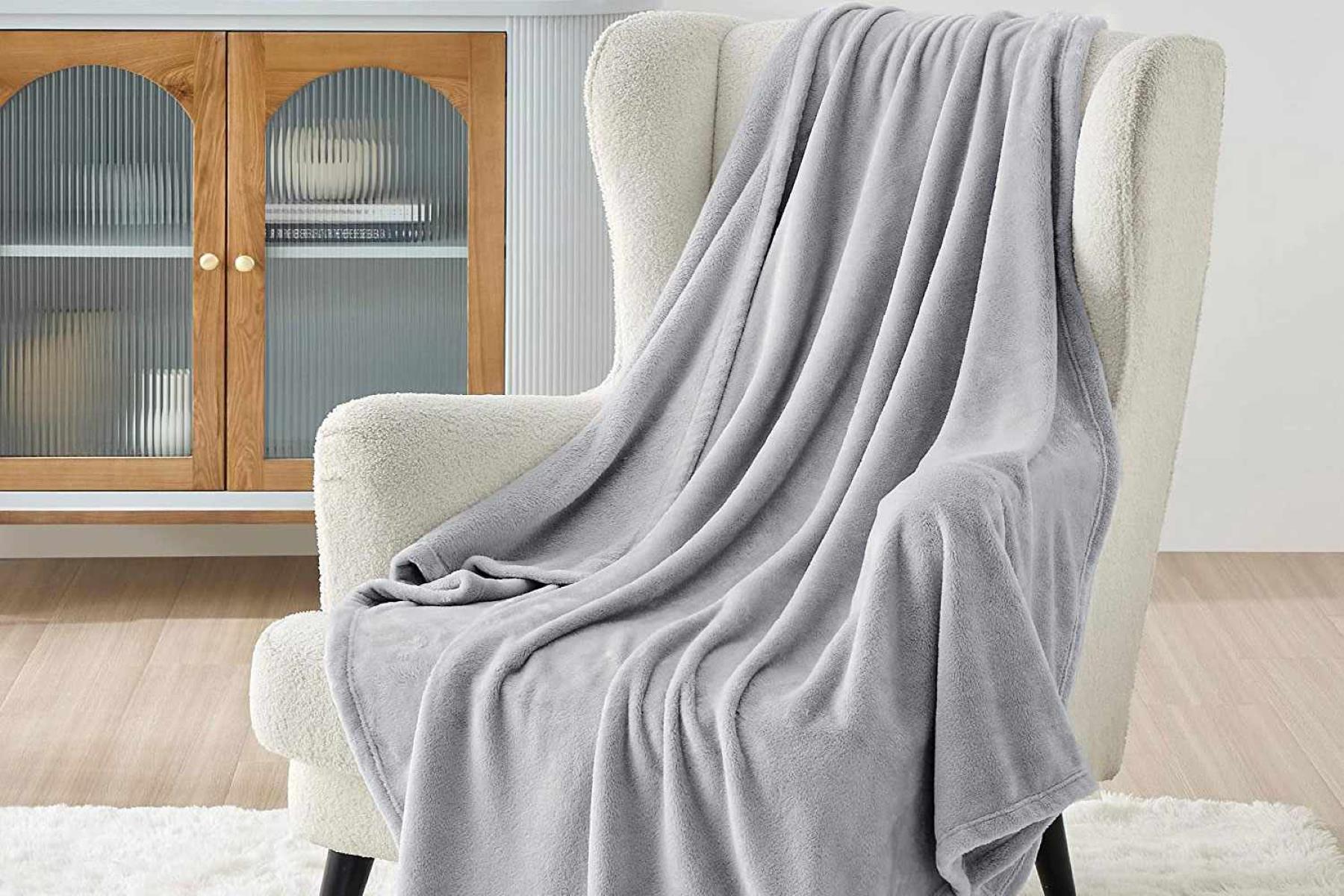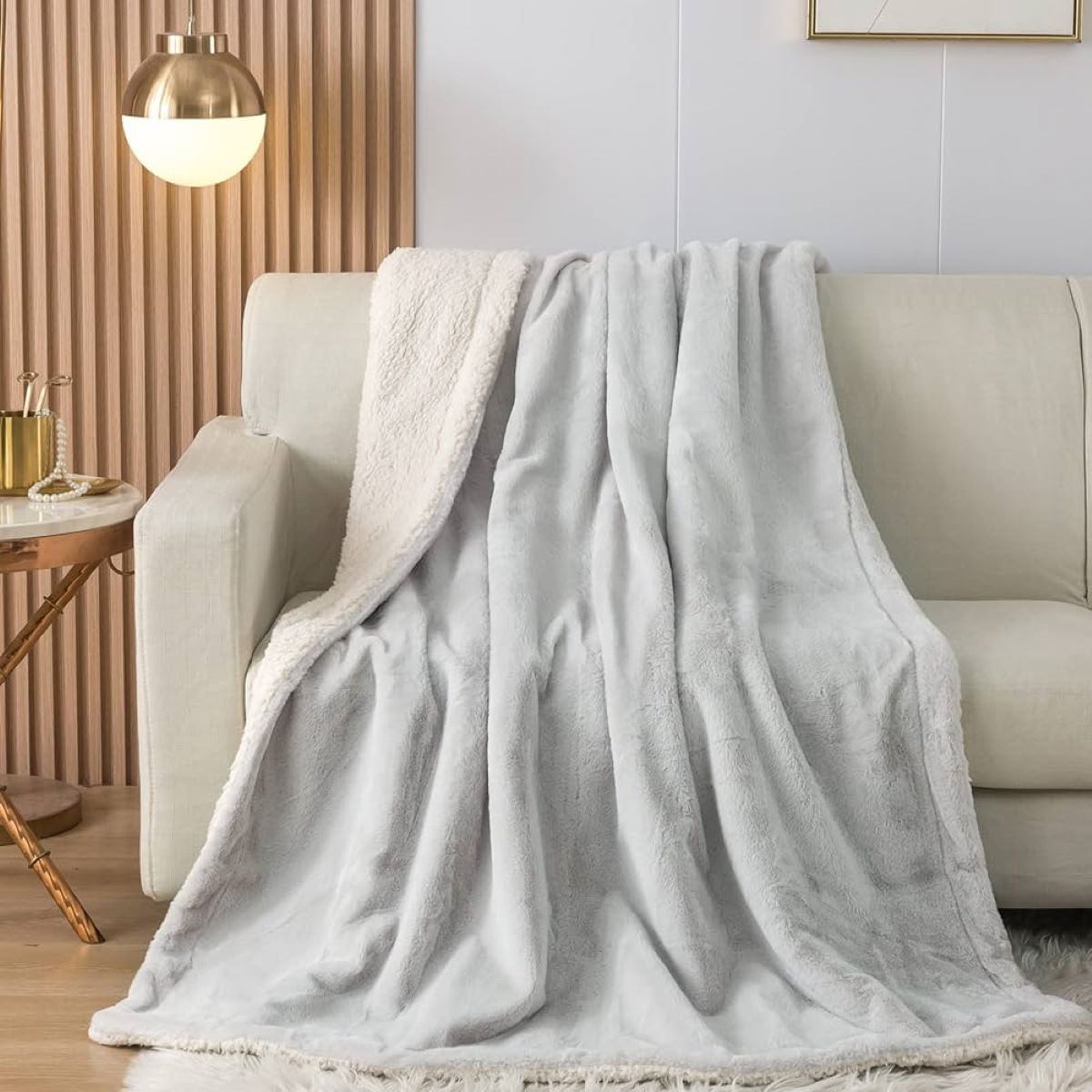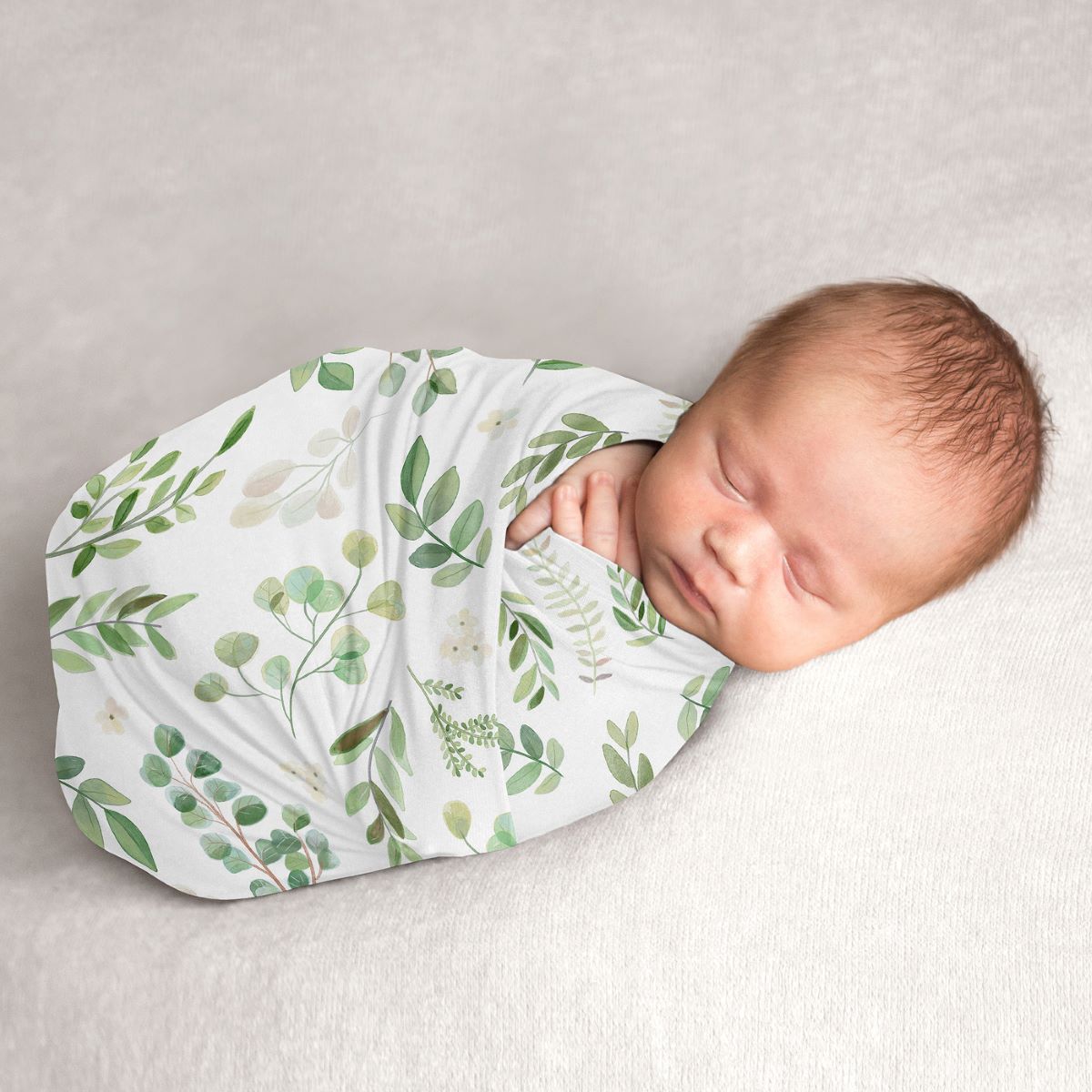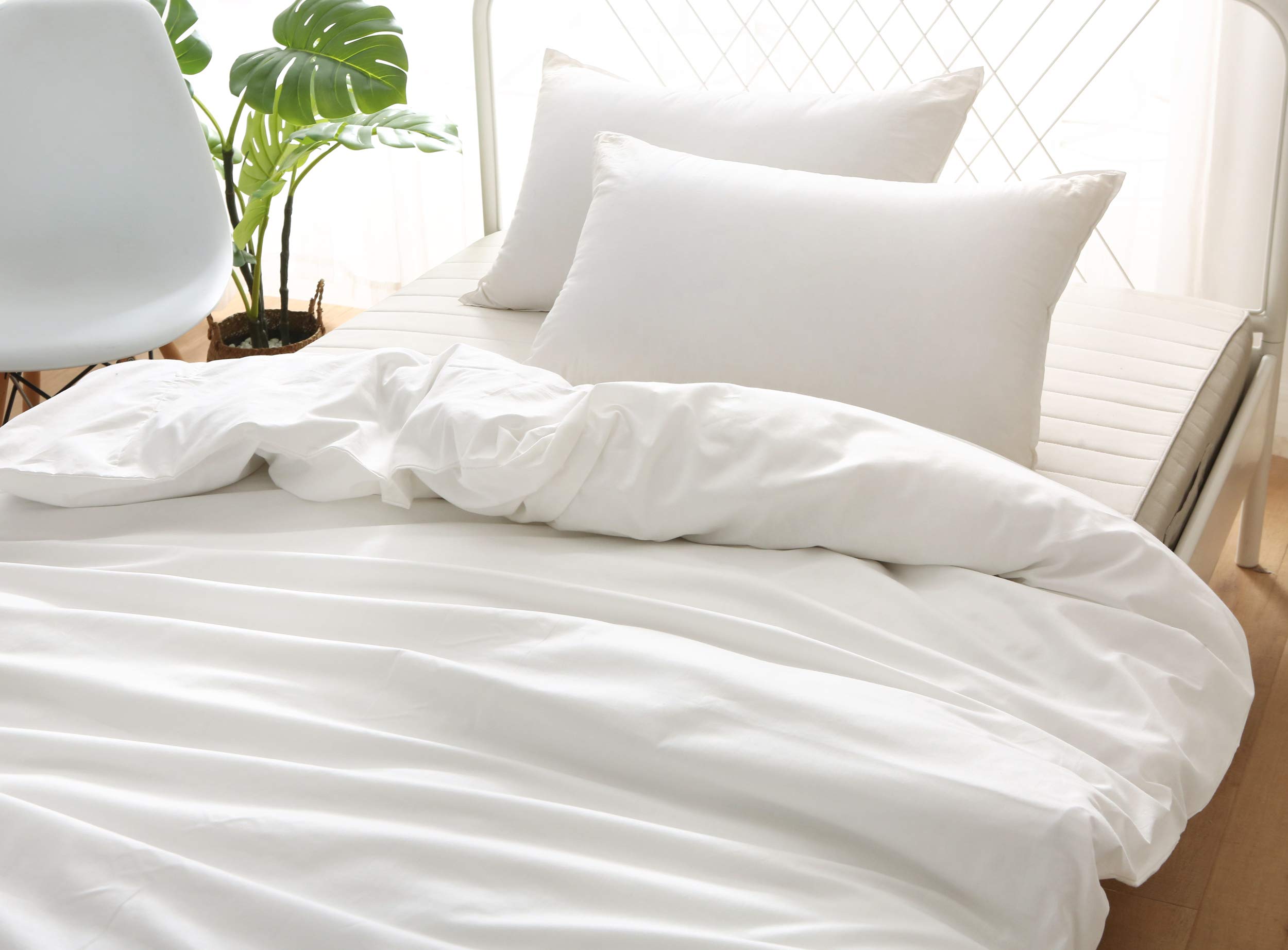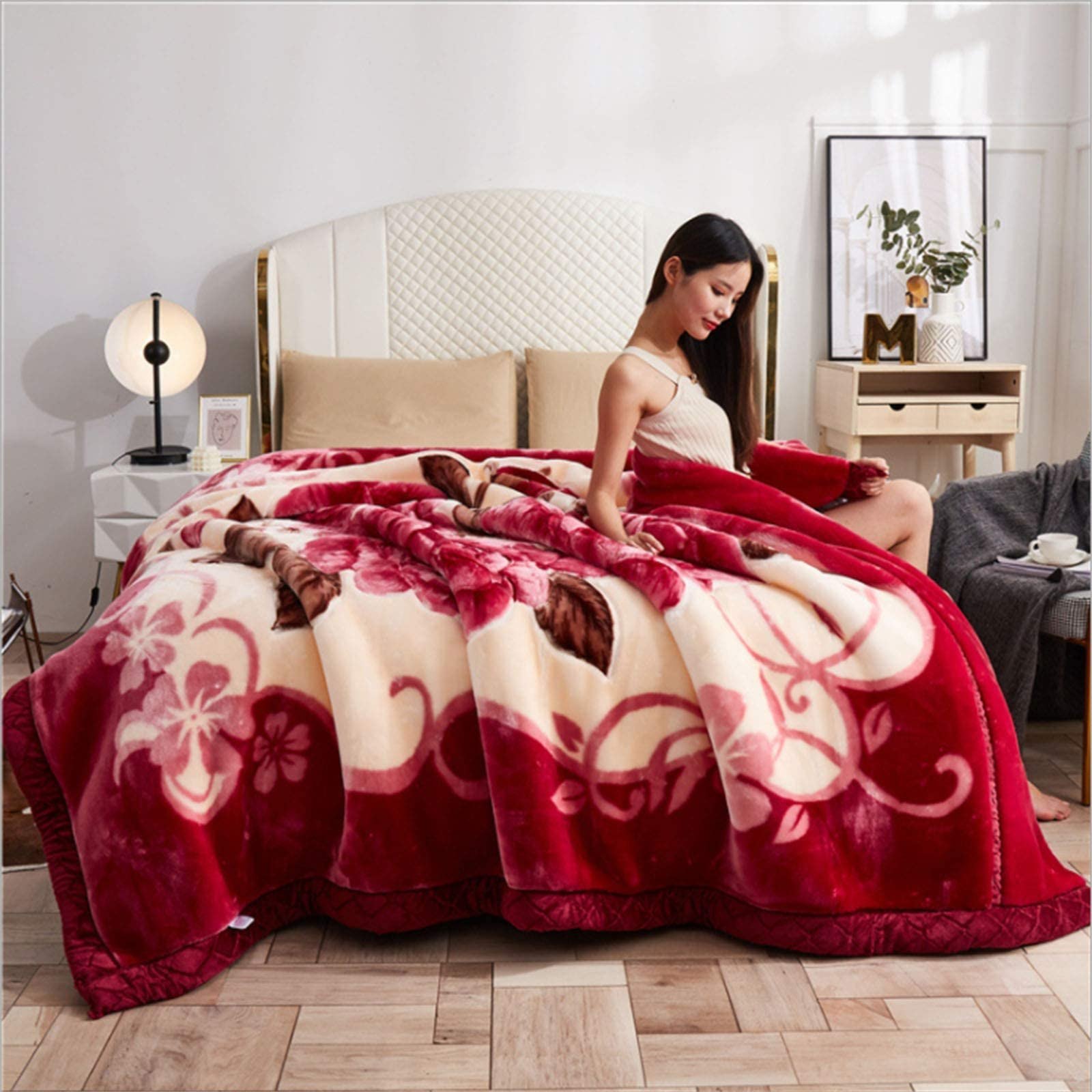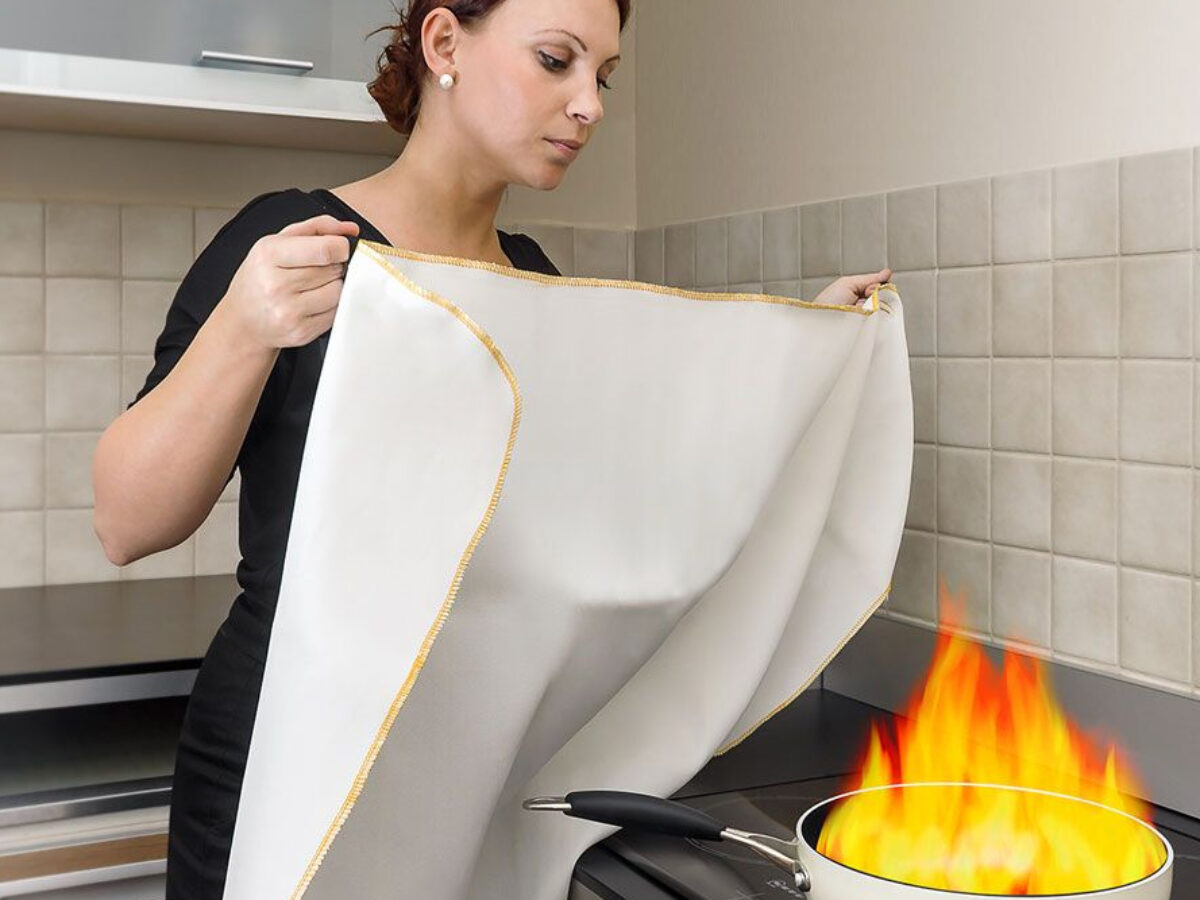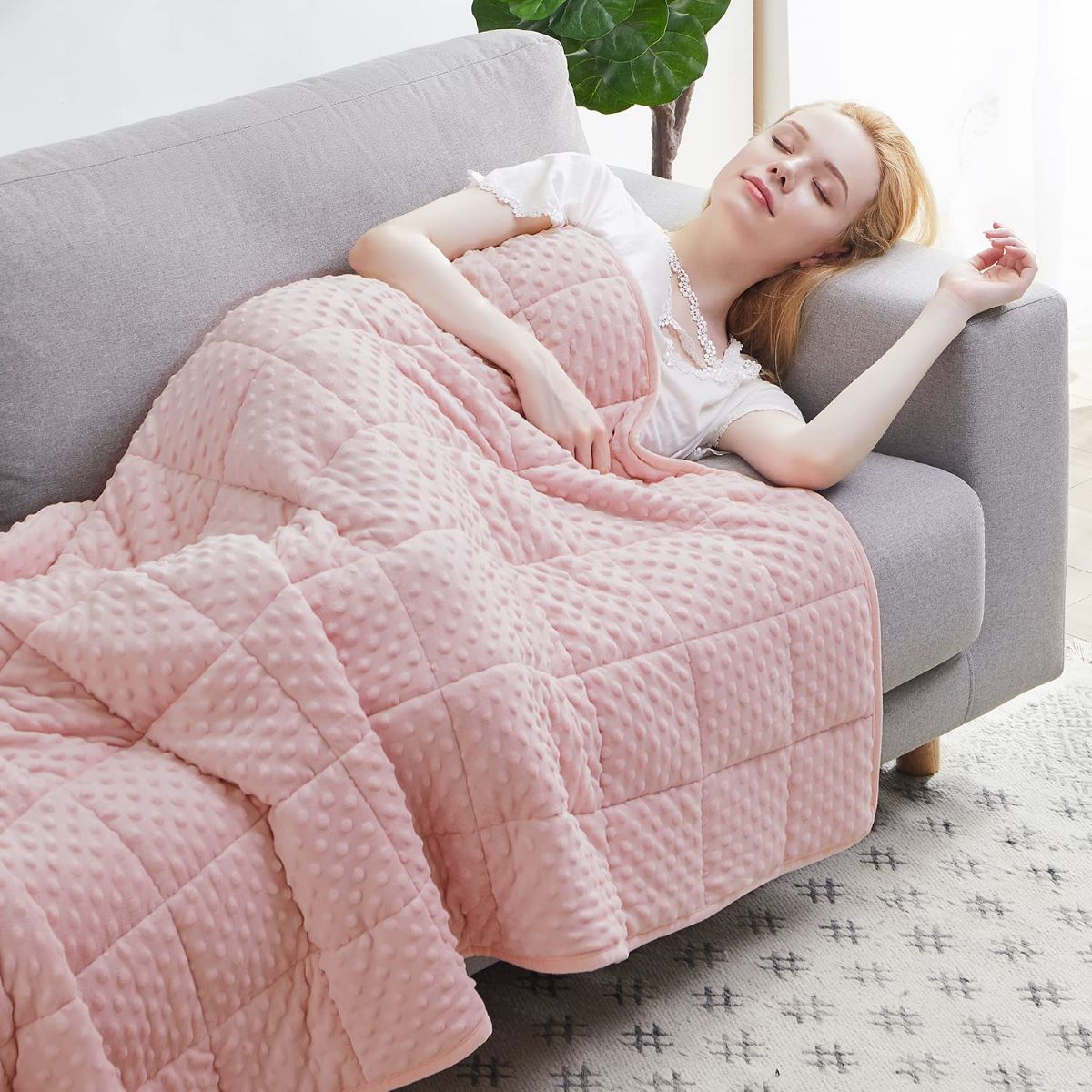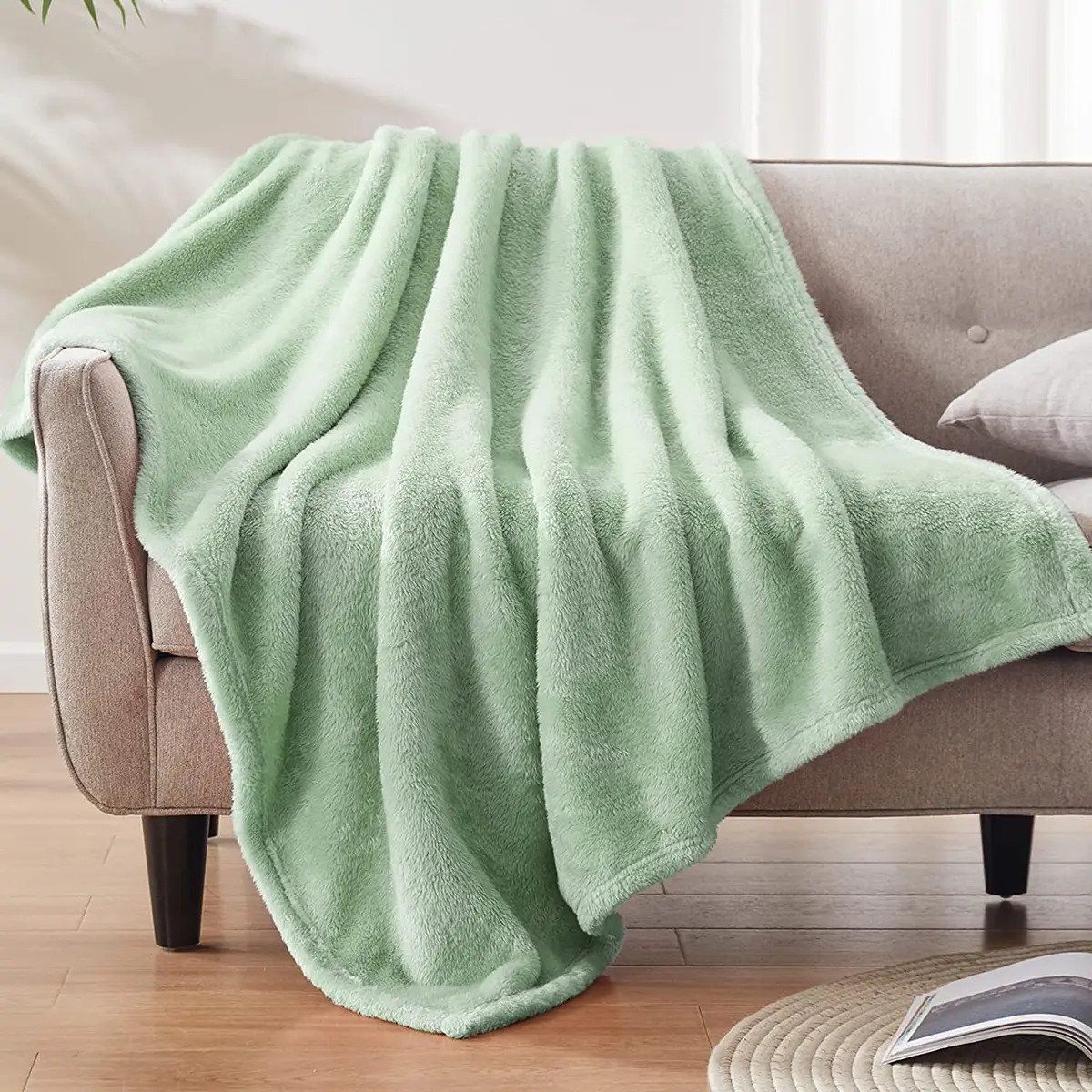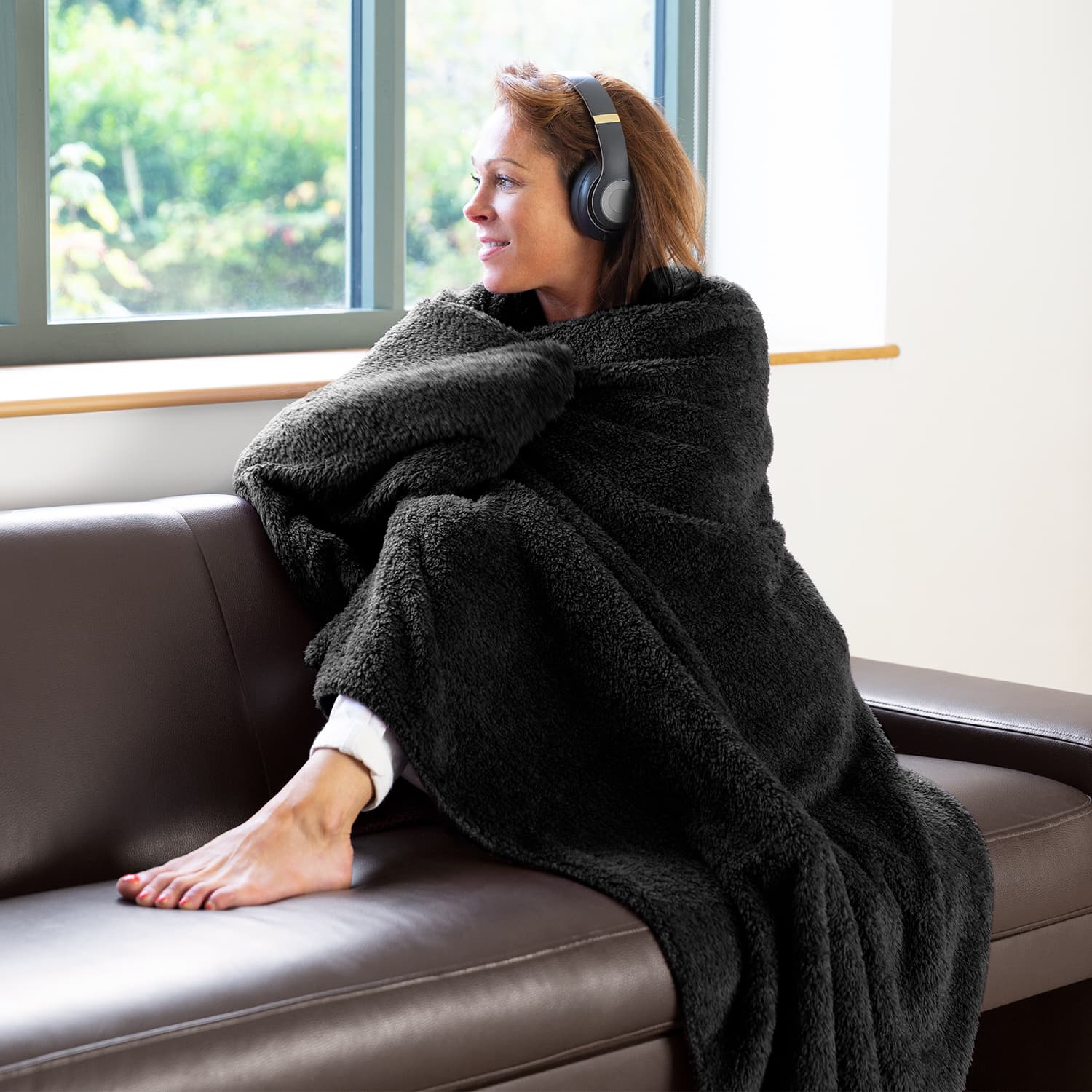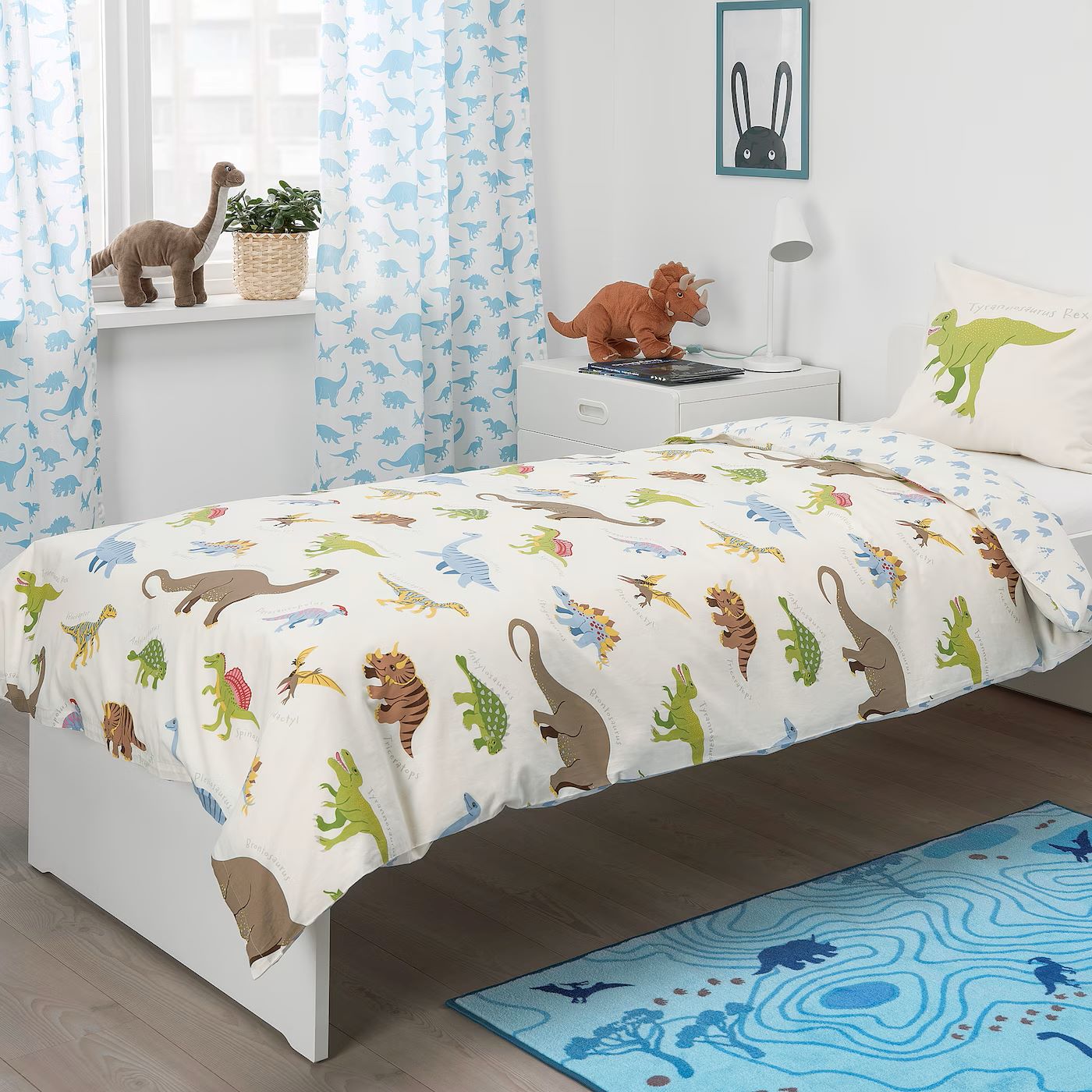

Articles
What Is A Blanket Cover
Modified: January 18, 2024
Discover everything you need to know about blanket covers with our informative articles. Explore different types, materials, and benefits for ultimate comfort.
(Many of the links in this article redirect to a specific reviewed product. Your purchase of these products through affiliate links helps to generate commission for Storables.com, at no extra cost. Learn more)
Introduction
When it comes to keeping warm and cozy during those chilly nights, a blanket cover is a must-have item. Whether you’re curling up on the couch or snuggling into bed, a blanket cover provides an extra layer of comfort and protection for your favorite blanket. But what exactly is a blanket cover, and why is it important?
A blanket cover, also known as a duvet cover or quilt cover, is a removable and washable fabric casing that encloses a blanket or comforter. It acts as a protective layer, shielding the blanket from dirt, stains, and wear and tear. Additionally, a blanket cover allows you to switch up the look and style of your bedding without having to replace the entire blanket.
Blanket covers come in a variety of sizes, colors, patterns, and materials, allowing you to customize your bed or living space to match your personal style. From luxurious silk to cozy flannel, there is a blanket cover to suit every taste and preference.
But a blanket cover serves more than just an aesthetic purpose. It also offers several practical benefits. By using a blanket cover, you can prolong the lifespan of your blanket by protecting it from spills, pet hair, and everyday wear. It is much easier to clean a blanket cover than to clean the entire blanket itself, making maintenance a breeze.
Choosing the right blanket cover involves considering factors such as material, thread count, breathability, and ease of care. Understanding these factors will ensure that you select a blanket cover that not only enhances your comfort but also meets your specific needs and preferences.
In this article, we will explore the different types of blanket covers available, the materials used in their construction, the benefits of using a blanket cover, and the factors to consider when choosing one. Additionally, we will provide tips on how to clean and maintain your blanket cover to keep it in pristine condition.
So, whether you’re looking to upgrade your bedding or protect your favorite blanket, read on to discover everything you need to know about blanket covers and how they can enhance your comfort and style.
Key Takeaways:
- Blanket covers, also known as duvet covers or quilt covers, offer protection, easy maintenance, style versatility, added comfort, and increased longevity for your bedding. They serve as a practical and stylish solution to enhance your sleep space.
- When choosing a blanket cover, consider factors such as material, thread count, size, design, ease of care, breathability, and hypoallergenic properties. By selecting the right cover, you can enhance your comfort, protect your bedding, and add a touch of style to your bedroom decor.
Read more: How To Cover A Couch With A Blanket
Definition of a Blanket Cover
A blanket cover, also known as a duvet cover or quilt cover, is a removable fabric casing that encloses a blanket or comforter. It is designed to protect the inner blanket from dirt, stains, and general wear and tear, while also providing an aesthetic element to your bedding. The blanket cover is typically open on one end, allowing for easy insertion and removal of the blanket.
Blanket covers come in various sizes to match different bedding sizes, such as twin, double, queen, and king. They are often made to fit snugly over the blanket, ensuring that it stays in place and does not shift during use.
These covers are usually made from durable materials such as cotton, linen, polyester, or a blend of fabrics. The choice of material determines the cover’s feel, breathability, and overall quality. For example, cotton offers a soft and breathable option, while linen adds a luxurious and natural texture to the bedding ensemble.
One key characteristic of blanket covers is their ability to be easily removed and washed. Unlike the blanket itself, which may require special care or professional cleaning, the cover can generally be machine washed and dried, making it convenient and practical for everyday use.
In addition to their protective and practical functions, blanket covers also serve as a decorative element in your bedroom or living space. They come in a variety of colors, patterns, and designs, allowing you to change the look and style of your bedding without investing in a new blanket. This versatility makes blanket covers a popular choice for those who like to refresh their decor frequently or experiment with different aesthetics.
Overall, a blanket cover is a versatile and essential accessory for anyone who wants to protect their blanket, add a touch of style to their bedding, and simplify the cleaning and maintenance process. So, whether you’re looking to enhance the longevity of your blanket or spice up your bedroom decor, a blanket cover is a practical and stylish solution.
Purpose of a Blanket Cover
A blanket cover serves multiple purposes, making it a valuable addition to your bedding ensemble. Let’s explore the main purposes and benefits of using a blanket cover:
- Protection: One of the primary purposes of a blanket cover is to protect the inner blanket or comforter. The cover acts as a barrier against dirt, stains, spills, and general wear and tear. By enclosing the blanket within a cover, you can ensure that it stays clean, fresh, and in excellent condition for a longer period.
- Easy Maintenance: Blanket covers are designed to be easily removable and machine washable, making them incredibly easy to clean and maintain. Instead of having to clean the entire blanket, which can be time-consuming and require special care, you can simply remove and wash the cover. This simplifies the cleaning process and allows you to keep your bedding fresh and hygienic with minimal effort.
- Style and Versatility: Blanket covers offer a great way to change the look and style of your bedding without replacing the entire blanket. With a wide range of colors, patterns, and designs available, you can easily switch up your bedding’s aesthetic to match your mood, the season, or your bedroom decor. This versatility allows you to create a cozy and inviting atmosphere that reflects your personal style and taste.
- Comfort: While the primary purpose of a blanket cover is to protect the inner blanket, it also contributes to your overall comfort. The cover provides an additional layer between you and the blanket, adding an extra level of softness and warmth. It creates a cozy and inviting environment, making it even more enjoyable to snuggle up and relax.
- Longevity: By using a blanket cover, you can extend the lifespan of your blanket or comforter. The cover acts as a shield, preventing direct wear and tear on the blanket itself. This can help preserve the quality and appearance of the blanket, allowing you to enjoy its warmth and comfort for many years to come.
Overall, the purpose of a blanket cover goes beyond simple aesthetics. It provides protection, easy maintenance, style versatility, added comfort, and increased longevity for your bedding. Whether you’re looking to protect your investment in a high-quality blanket or enhance the visual appeal of your bedroom, a blanket cover serves as a practical and stylish solution.
Types of Blanket Covers
Blanket covers come in various types, each offering its own unique features and benefits. Let’s explore some of the most popular types of blanket covers available:
- Cotton Blanket Covers: Cotton is a popular choice for blanket covers due to its softness, breathability, and durability. Cotton covers are lightweight, making them ideal for warmer climates or for those who prefer a cooler sleeping environment. They are available in a wide range of colors and patterns, allowing you to find the perfect match for your bedroom decor.
- Linen Blanket Covers: Linen is a luxurious and natural fabric known for its unmatched beauty and breathability. Linen blanket covers offer a relaxed and timeless look to your bedding ensemble. They have a unique texture and are highly durable, becoming softer and more comfortable with each wash. Linen covers are a great choice for those who appreciate a rustic yet sophisticated aesthetic.
- Flannel Blanket Covers: Flannel is a warm and cozy fabric that provides exceptional comfort during colder months. Flannel blanket covers are made from brushed cotton or wool, giving them a soft and fuzzy texture. They trap heat effectively, making them ideal for chilly nights. Flannel covers are available in various plaid patterns and solid colors, adding a touch of warmth and coziness to your bedroom.
- Silk Blanket Covers: For those looking to add a touch of luxury to their bedding, silk blanket covers are an excellent choice. Silk is a natural fabric renowned for its smoothness and sleek appearance. Silk covers offer a luxurious and elegant feel, making them perfect for a sophisticated and indulgent sleeping experience.
- Polyester Blend Blanket Covers: Polyester blend blanket covers combine the best qualities of polyester and other materials. They are lightweight, durable, and wrinkle-resistant, making them a practical option for everyday use. Polyester blend covers are available in various patterns and colors, offering versatility and affordability.
It’s important to consider your personal preferences, the climate you live in, and your specific needs when selecting a blanket cover. Whether you prefer the softness of cotton, the luxury of silk, or the warmth of flannel, there is a type of blanket cover to suit your style and comfort.
Additionally, blanket covers come in different sizes to match various bed sizes, such as twin, double, queen, and king. It’s essential to choose the right size cover to ensure a proper fit and maximum comfort.
By exploring the different types of blanket covers, you can find the perfect one that meets your needs, enhances your bedding ensemble, and provides you with the utmost comfort and style.
Material and Fabrics Used in Blanket Covers
Blanket covers are available in a wide range of materials and fabrics, each with its own unique characteristics and benefits. The choice of material plays a significant role in determining the feel, durability, and overall quality of the cover. Let’s explore some of the common materials used in blanket covers:
- Cotton: Cotton is one of the most popular materials used in blanket covers. It is known for its softness, breathability, and durability. Cotton covers provide a comfortable and cozy feel, making them ideal for year-round use. They are also hypoallergenic, making them suitable for individuals with allergies or sensitive skin.
- Linen: Linen is a natural fabric made from flax fibers. It is highly breathable and known for its exceptional moisture-wicking properties. Linen covers offer a relaxed and luxurious feel, creating a comfortable sleeping environment. Additionally, linen becomes softer and more comfortable with each wash, making it a durable and long-lasting choice.
- Polyester: Polyester is a synthetic material known for its durability and wrinkle resistance. Polyester covers are easy to care for and maintain, as they are machine washable and quick-drying. They are also affordable and available in a wide range of colors and patterns, offering versatility and affordability.
- Silk: Silk is a luxurious and smooth fabric that provides an unparalleled softness and elegance. Silk covers offer a luxurious and indulgent sleeping experience. They are hypoallergenic and naturally temperature-regulating, making them suitable for individuals with sensitivities or those who prefer a cooler sleeping environment.
- Flannel: Flannel is a warm and cozy fabric often made from brushed cotton or wool. Flannel covers provide exceptional warmth and comfort, making them ideal for colder climates or winter months. They have a soft and fuzzy texture, offering a cozy and inviting feel to your bedding.
When selecting a blanket cover, consider factors such as personal preference, climate, and your desired comfort level. Additionally, consider the care instructions and maintenance requirements of each material to ensure that you choose a cover that aligns with your lifestyle and needs.
It’s worth noting that many blanket covers are made from a blend of materials, combining the best qualities of each fabric. These blends can offer enhanced durability, breathability, and softness, creating a well-rounded and comfortable sleeping experience.
By understanding the materials and fabrics used in blanket covers, you can make an informed decision and select a cover that not only complements your style but also provides the desired feel and comfort for a restful night’s sleep.
A blanket cover, also known as a duvet cover, is a removable fabric cover that encases a duvet or comforter. It protects the duvet and allows for easy washing, while also providing a decorative touch to the bed. When choosing a blanket cover, consider the material, size, and design that best suits your needs and style.
Benefits of Using a Blanket Cover
Using a blanket cover, also known as a duvet cover or quilt cover, offers several benefits that enhance both the functionality and aesthetics of your bedding. Let’s explore some of the advantages of using a blanket cover:
- Protection: One of the primary benefits of using a blanket cover is the protection it provides to your inner blanket or comforter. The cover acts as a barrier against dirt, stains, spills, and general wear and tear. It shields the blanket from everyday elements, helping to prolong its lifespan and keep it in pristine condition.
- Easy Maintenance: Blanket covers are designed to be easily removable and machine washable, simplifying the maintenance process. Instead of having to clean the entire blanket, which can be time-consuming, you can simply remove and wash the cover. This makes it more convenient and practical to keep your bedding fresh and clean. Additionally, some covers have added features like stain resistance or hypoallergenic properties, making them even easier to care for.
- Style Versatility: Blanket covers offer a great way to update the look and style of your bedding without having to replace the entire blanket. With a wide range of colors, patterns, and designs available, you can easily change the aesthetic of your bedding to suit your mood, the season, or your bedroom decor. This versatility allows you to create a fresh and inviting atmosphere in your bedroom, reflecting your personal style and taste.
- Comfort and Softness: Using a blanket cover adds an additional layer of comfort and softness to your bedding. The cover acts as a buffer between you and the blanket, providing a cozy and inviting feel. It can also help regulate temperature, keeping you warm in colder months and cool during warmer seasons. The softness and warmth of a blanket cover contribute to a more comfortable and restful sleep.
- Decorative Element: Blanket covers serve as a decorative element in your bedroom or living space. With a wide array of colors, patterns, and designs to choose from, you can easily coordinate your bedding with the overall decor of the room. The cover can act as a focal point or add a pop of color, enhancing the visual appeal of your space and creating a cohesive and inviting atmosphere.
- Economical and Sustainable: By using a blanket cover, you can extend the lifespan of your blanket or comforter. By protecting it from daily wear and tear, you can avoid the need for frequent replacements. This not only saves you money but also contributes to a more sustainable lifestyle by reducing waste.
Overall, the benefits of using a blanket cover range from protecting your blanket and simplifying maintenance to offering style versatility and added comfort. Whether you’re looking to prolong the life of your blanket, enhance the aesthetic of your bedroom, or simply add an extra layer of coziness, a blanket cover is a practical and stylish solution.
Factors to Consider When Choosing a Blanket Cover
When selecting a blanket cover for your bedding, there are several factors to consider that can help you find the perfect match. Here are some important factors to keep in mind:
- Material: Consider the material of the blanket cover and choose one that suits your preferences and needs. Cotton is soft and breathable, linen offers a natural and luxurious feel, polyester is durable and easy to care for, silk provides a touch of luxury, and flannel offers warmth and coziness.
- Thread Count: Thread count refers to the number of threads woven into one square inch of fabric. A higher thread count often indicates a softer and more luxurious feel. However, it’s essential to balance thread count with breathability, as a high thread count may result in a less breathable cover.
- Size: Ensure that you choose a blanket cover that matches the size of your blanket or comforter. It should provide a proper fit and not be too loose or too tight. Common sizes include twin, double, queen, and king, so select the appropriate size for your specific bedding measurements.
- Design and Style: Consider the design and style of the blanket cover to ensure it complements your bedroom decor and personal taste. Choose from a variety of colors, patterns, and designs that resonate with your aesthetic preferences and create the desired ambiance in your bedroom.
- Easy Care: Look for a blanket cover that is easy to care for and maintain. Machine washable and tumble-dry friendly options are convenient and save time and effort. Additionally, consider covers that are stain-resistant or wrinkle-resistant if those features align with your needs.
- Breathability: If you tend to sleep hot or live in a warmer climate, consider a blanket cover with good breathability. Materials like cotton or linen offer excellent airflow and moisture-wicking properties, ensuring a comfortable sleep experience.
- Hypoallergenic Properties: If you have allergies or sensitivities, look for blanket covers that are hypoallergenic and resistant to allergens, dust mites, and mold. This can help create a healthier sleeping environment and minimize allergen-related issues.
- Budget: Determine your budget range and look for options that fit within that range. Blanket covers come in a wide price range, so you can find options to suit different budgets without compromising on quality or style.
By considering these factors, you can choose a blanket cover that aligns with your preferences, needs, and budget. Remember that finding the right blanket cover can enhance your comfort, protect your bedding, and add a touch of style to your bedroom decor.
How to Clean and Maintain a Blanket Cover
Keeping your blanket cover clean and well-maintained is essential for its longevity and your overall bedding hygiene. Here are some tips on how to clean and maintain a blanket cover:
- Read the Care Instructions: Before cleaning your blanket cover, carefully read and follow the care instructions provided by the manufacturer. Different materials may have specific cleaning requirements, so it’s important to understand and adhere to these instructions.
- Regular Washing: It is recommended to wash your blanket cover regularly, especially if it is used daily. Depending on the material, most blanket covers can be machine washed. Select a gentle cycle and use a mild detergent to avoid damaging the fabric. Also, wash the cover separately from other items to prevent color bleeding or fabric damage.
- Stain Removal: If your blanket cover gets stained, address the stains as soon as possible. Check the care instructions for specific stain removal recommendations. For light stains, pre-treating with a stain remover or a mixture of water and mild soap can help. For tougher stains, you may need to use a specialized stain remover or take the cover to a professional cleaner.
- Drying: Dry your blanket cover according to the care instructions. Most covers can be tumble dried on low heat or air-dried. Avoid high heat, as it can damage certain fabrics. If possible, remove the cover from the dryer while it is still slightly damp to minimize wrinkles and ensure it retains its shape.
- Ironing: If necessary, iron your blanket cover on a low heat setting. Be sure to check the fabric’s care instructions before ironing, as some materials are not suitable for ironing or require specific temperature settings.
- Storage: When not in use, store your clean and dry blanket cover in a cool, dry place. Avoid storing it in direct sunlight, as this can cause fading or discoloration over time. Consider using a storage bag or container to protect the cover from dust and pests.
- Spot Cleaning: For minor spills or stains, spot cleaning may be sufficient. Use a clean cloth or sponge dampened with mild soap and water to gently blot the affected area. Avoid rubbing or scrubbing vigorously, as it can damage the fabric.
- Rotate and Air Out: To keep your blanket cover fresh, rotate it with other covers and allow it to air out regularly. This helps to prevent the buildup of odors and keeps the fabric feeling and smelling clean.
By following these cleaning and maintenance tips, you can ensure that your blanket cover stays in excellent condition for a long time. Proper care not only preserves the appearance and quality of the cover but also contributes to a clean and comfortable sleeping environment.
Conclusion
Blanket covers, also known as duvet covers or quilt covers, are more than just a decorative element for your bedding. They offer practical benefits and enhance both the functionality and aesthetics of your sleep space. By understanding the various aspects of blanket covers, from their definition and purpose to the types of materials used, you can make informed choices when selecting the perfect cover for your bedding.
A blanket cover serves as a protective layer for your inner blanket or comforter, shielding it from dirt, stains, and everyday wear and tear. It also simplifies maintenance, as the cover can be easily removed and washed, unlike the blanket itself. Additionally, blanket covers provide style versatility, allowing you to change the look and feel of your bedding without the need for a complete replacement.
When choosing a blanket cover, consider factors such as the material, thread count, size, design, and ease of care. There are various materials to choose from, such as cotton for softness and breathability, linen for a luxurious and natural feel, and flannel for warmth and coziness. By selecting a cover that matches your preferences and needs, you can enhance your comfort and create a cohesive and inviting atmosphere in your sleep space.
Cleaning and maintaining your blanket cover is important to ensure its longevity and keep your bedding fresh and hygienic. Regular washing, stain removal techniques, proper drying, and appropriate storage are key steps in maintaining your cover’s quality and appearance. Adhering to the care instructions provided by the manufacturer is crucial for keeping your blanket cover in excellent condition.
In conclusion, a blanket cover provides not only protection for your blanket or comforter but also adds style and comfort to your bedroom. With the wide range of materials, designs, and sizes available, you can find a blanket cover that perfectly suits your preferences and elevates your sleeping experience. By taking proper care of your blanket cover, you can enjoy its benefits for years to come, ensuring a cozy and inviting space to retreat to every night.
Frequently Asked Questions about What Is A Blanket Cover
Was this page helpful?
At Storables.com, we guarantee accurate and reliable information. Our content, validated by Expert Board Contributors, is crafted following stringent Editorial Policies. We're committed to providing you with well-researched, expert-backed insights for all your informational needs.
